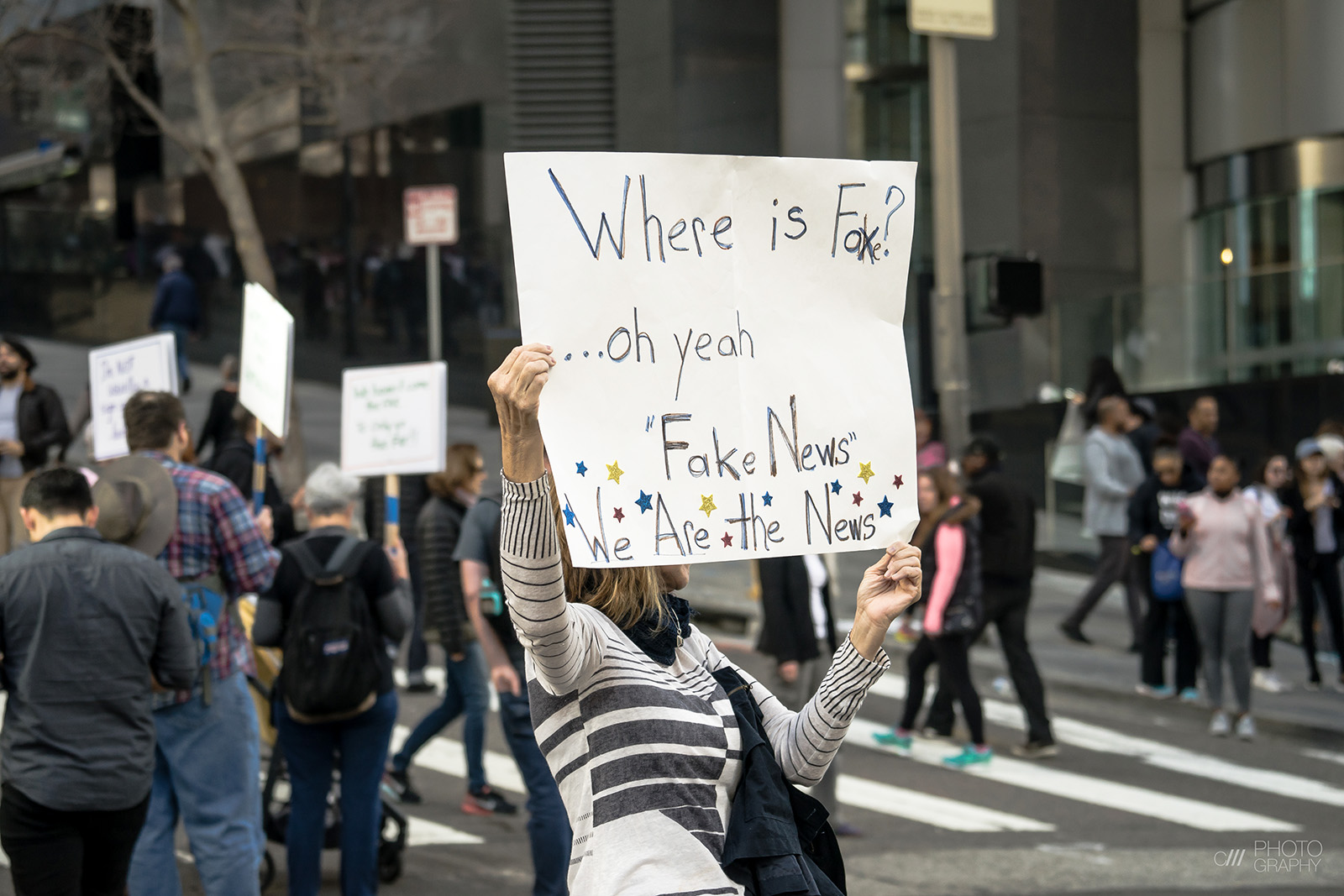Austin Pink: UCLA should require students to take a course on media literacy

(Creative Commons photo by Cody Williams via flickr)
By Austin Pink
Feb. 6, 2017 9:06 p.m.
Campus protests, executive actions, Steve Harvey. Why are these things happening? What will happen next?
Much of the anxiety surrounding the recent election and President Donald Trump’s executive actions has been marked by unprecedented online staging. The information market has officially left the corporeal world for the era of digital, and it’s not going back.
According to the Pew Research Center, 98 percent of undergraduate college students use the internet on a regular basis. Further, almost 40 percent of all Americans consider the internet a top source for news media. Given such trends, the recent unease about misinformation pervading online media becomes even more unnerving.
Education needs to catch up in cultivating the critical analysis needed to make online media an asset rather than a liability. UCLA needs to lead the way and integrate critical media literacy into its curriculum. Specifically, it should replace an existing requirement in general education with a course in critical media literacy.
In the Handbook of Research on Media Literacy in the Digital Age, critical media literacy is described as a way of approaching multimedia analytically, “questioning embedded ideologies, systems, structures, and hierarchies of power.” Basically, it promotes an active, inquiry-based approach to consuming information.
For example, when reading news articles or opinion columns like this one, you should ask questions like: “Who wrote this information? Why did they write it? What organizations do they represent?” With this type of active engagement, one can find hidden bias, ideology and even blatant falsehood. Students are not invulnerable to these hidden subtexts.
A recent study by Stanford researchers attempted to assess students’ ability to identify and critique information sources. The researchers described their results as “dismaying,” “bleak” and a “threat to democracy.” High school and college students alike had trouble spotting fake articles, discerning fringe organizations from mainstream ones and identifying ideological activists in a series of media exposure tests.
This shouldn’t come as a surprise.
When freshmen arrive at UCLA, they have a tacit confidence in their academic abilities. They have read the Cliffnotes of “To Kill a Mockingbird,” for God’s sake. How exactly could some hoity-toity dogfart of a college professor possibly challenge them? As it turns out, there are a lot of ways.
While UCLA has a comprehensive GE program meant to introduce students to a variety of topics, it fails to give a context for employing the flood of incoming information. We’re given plenty of information, but have no idea how to process it.
In many classes, there may be a slide or two on the PowerPoint syllabus about research methodology. But most arriving students have little knowledge about using research databases, cross referencing evidence, differentiating primary versus secondary sources or recognizing implicit bias. And most turn to the internet as a guide. The problem, however, is in how we perceive the information we find online. Like traditional media, digital tools are not neutral. Sometimes the source is fabricated or unreliable. Sometimes the information is purely false.
With students reliant on potentially untrustworthy online sources, there needs to be a GE course in critical media literacy.
There’s already a UCLA course that provides an ideal prototype for furthering these skills in undergraduates. UCLA lecturer Jeffrey Share helped design Education 466: “Critical Medial Literacy” to promote conceptual understanding of critical media literacy while providing opportunities to create and experience linguistic, social and visual representation firsthand. It is now a requirement for any new teacher gaining certification from UCLA’s Teacher Education Program.
The College of Letters and Science should develop a similar course to replace a GE requirement for undergraduates. Not only would it begin their academic careers by sharpening their abilities to acquire and analyze information, but it would also embolden the purpose of the GE program, which is to broadly prepare students for the rigor of a college curriculum.
Students may argue there are already too many stifling bureaucratic requirements in UCLA’s GE curriculum. However, with up to five required courses in vague premises like “Society and Culture” or “Arts and Humanities,” there is room to replace one of those courses with one on information processing.
And while the internet does provide numerous reliable sources for fact-checking, misrepresentation still occurs more easily than traditional media and seeing false information once is often all it takes to create similarly false impressions.
The lack of critical media literacy is a big problem and not limited to student consumers. But making sure our students begin their careers with the right tools is the best way UCLA can help increase media literacy. And it’s a small first step that would make a lasting impact.


